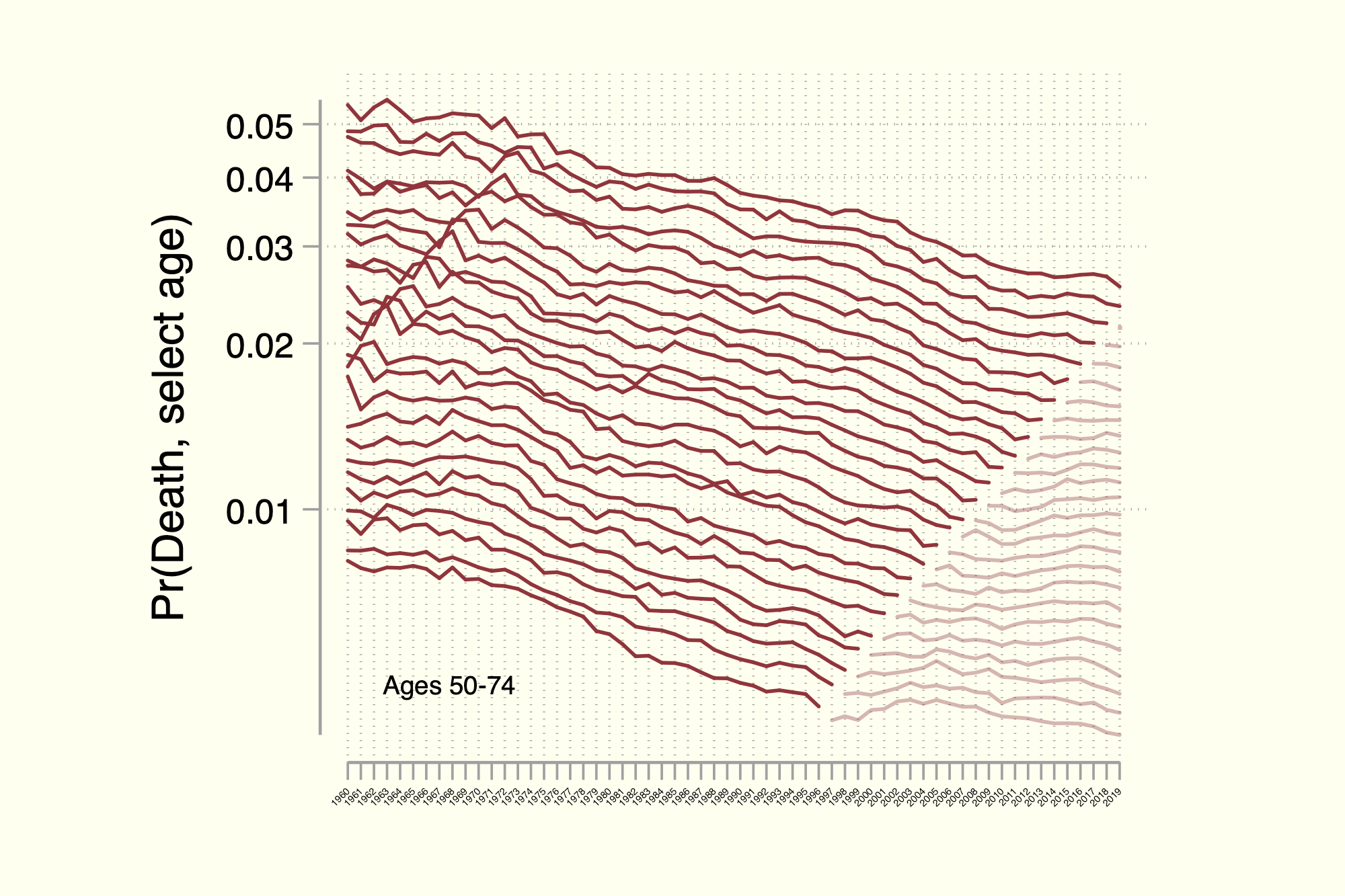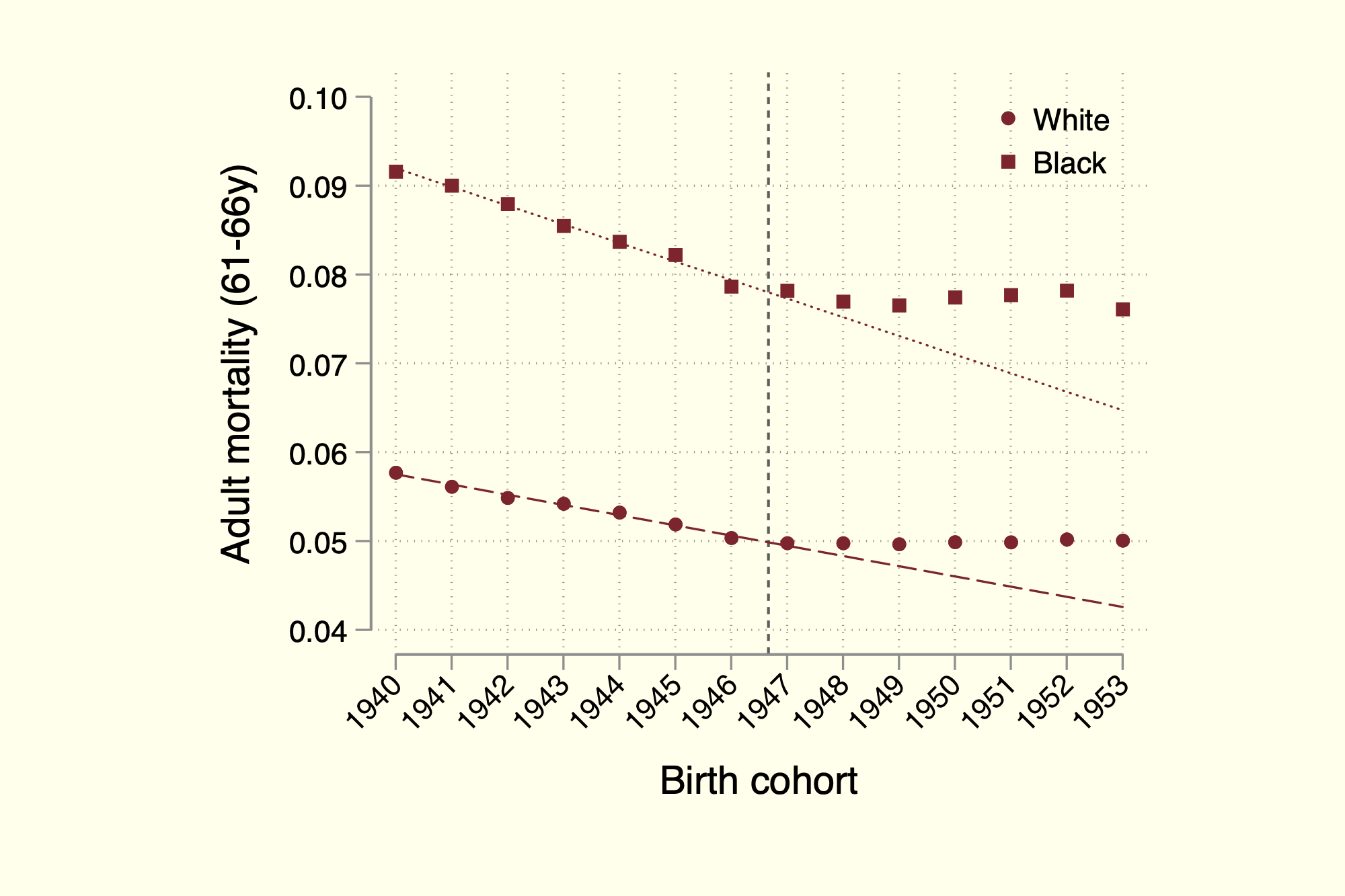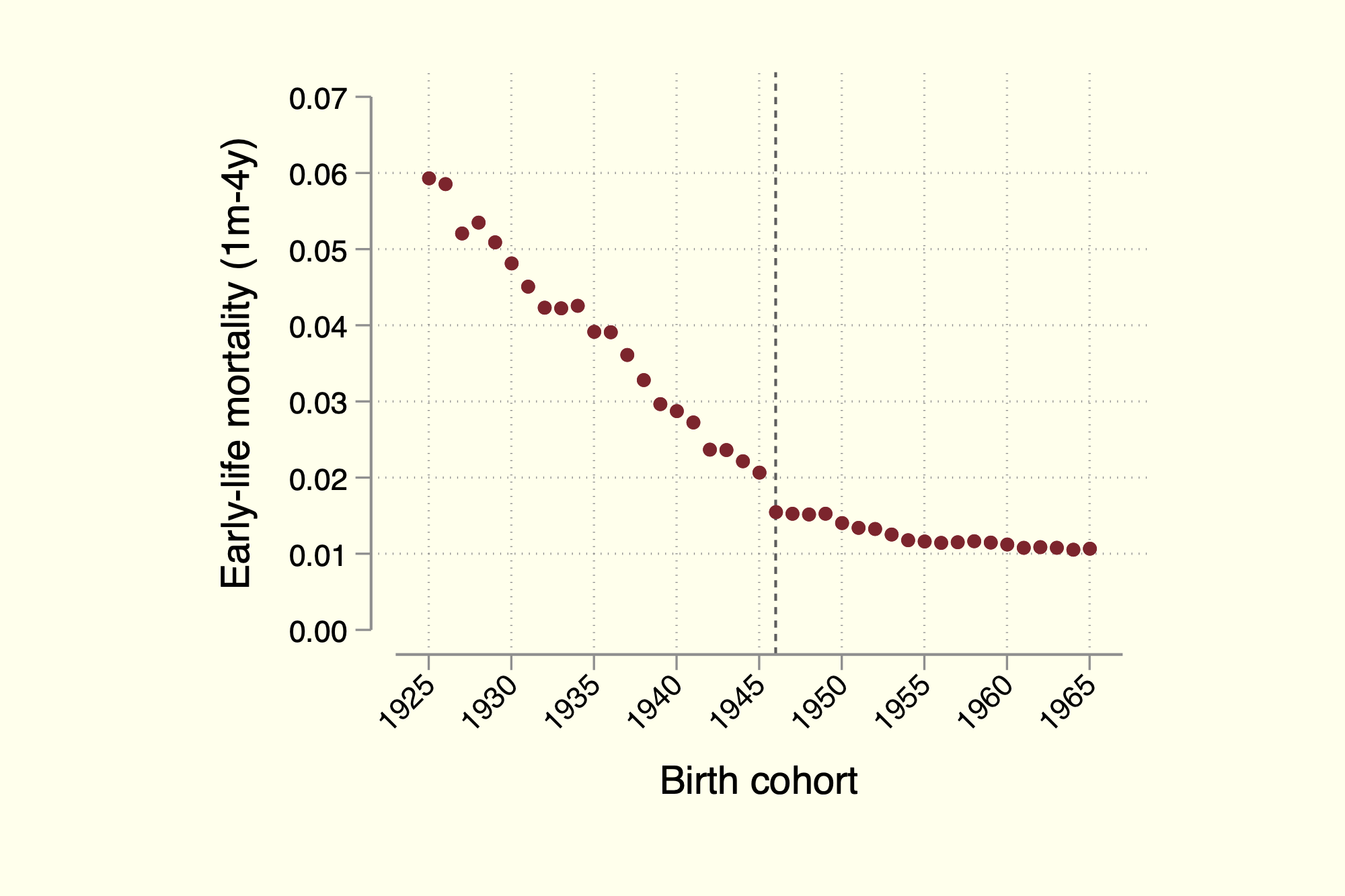This paper argues that three patterns—as opposed to one, two, or many—are causing the United States to be such an outlier in terms of life expectancy among rich countries in the 21st Century. Each pattern has distinctive properties, and one—which appears to be most influential—has only recently been recognized.
Dr. Arenberg is an Assistant Professor at the University of Houston with a joint appointment between the Department of Economics and the Hobby School of Public Affairs. He conducts research in the fields of population health and economic demography.
Latest Research
The Signature of a Mid-century Cohort Malaise
This paper lays out several key facts about the cessation of progress in adult mortality rates for successive birth cohorts in the United States. We document (i) the sharp timing of the “cohort malaise,” (ii) its uniqueness among wealthy countries, and (iii) its ubiquity within the US, which together form a distinctive “signature.”
Candidate Origins of the Recent Stagnation in Midlife Mortality in the United States
The recent and ongoing stagnation in midlife mortality in the United States is among the country's most urgent health crises, yet its primary causes are unknown. This paper posits that the explanation could lie in another concerning trend that unfolded nearly 80 years ago.



